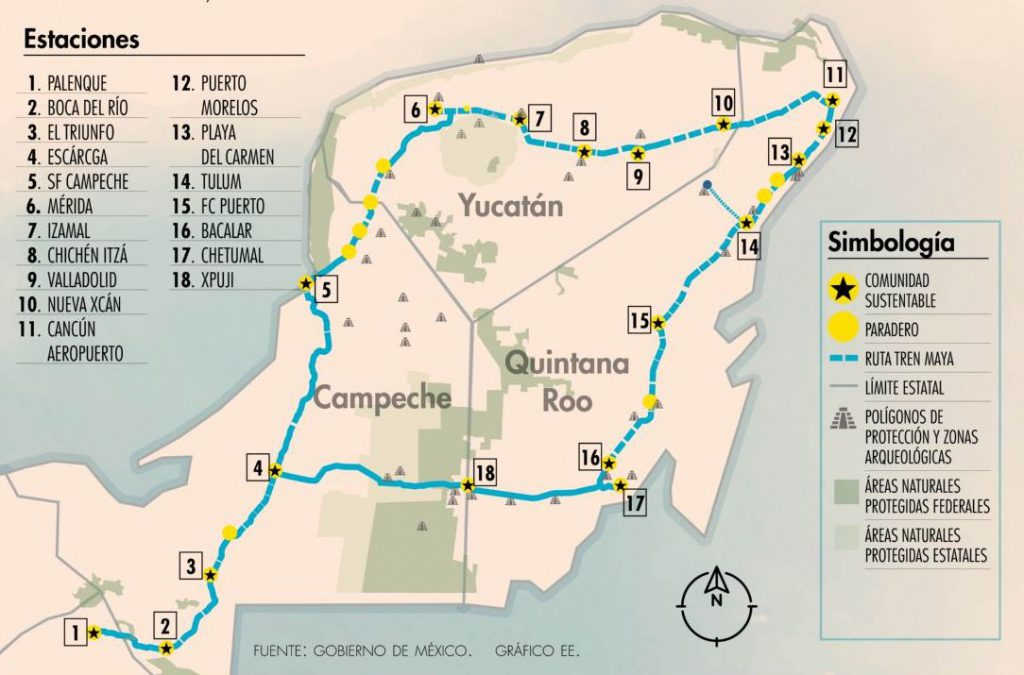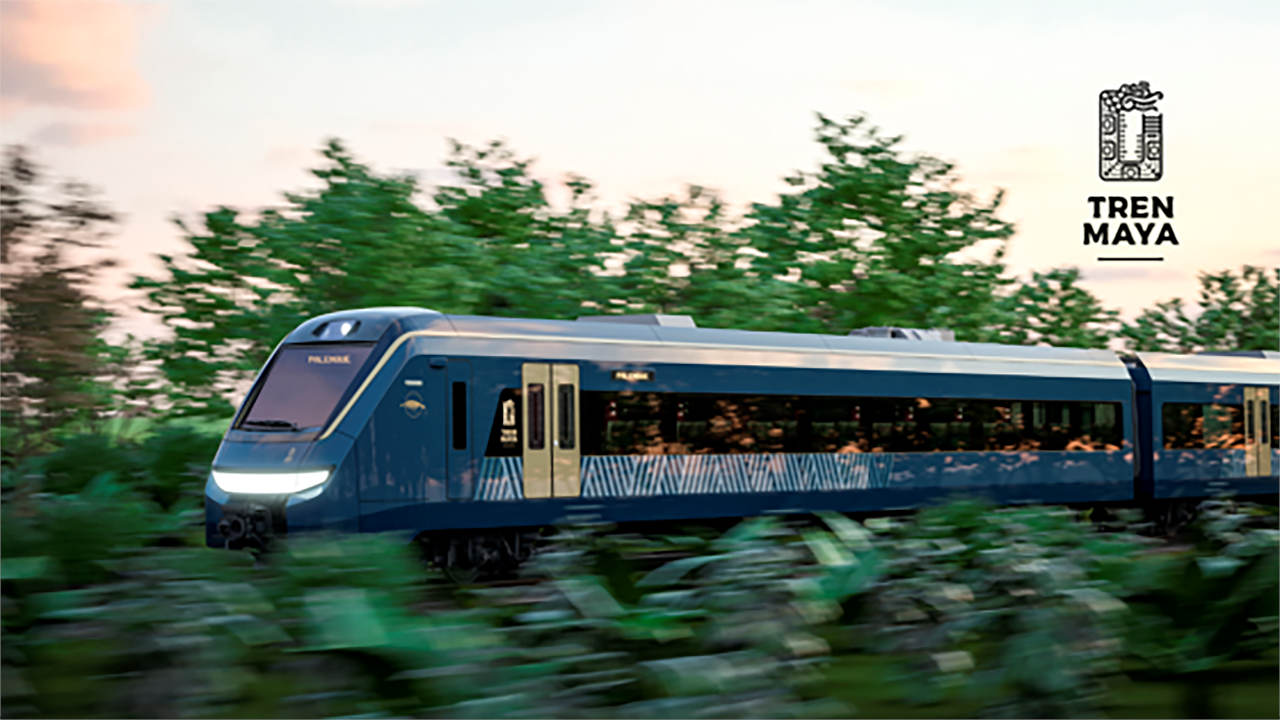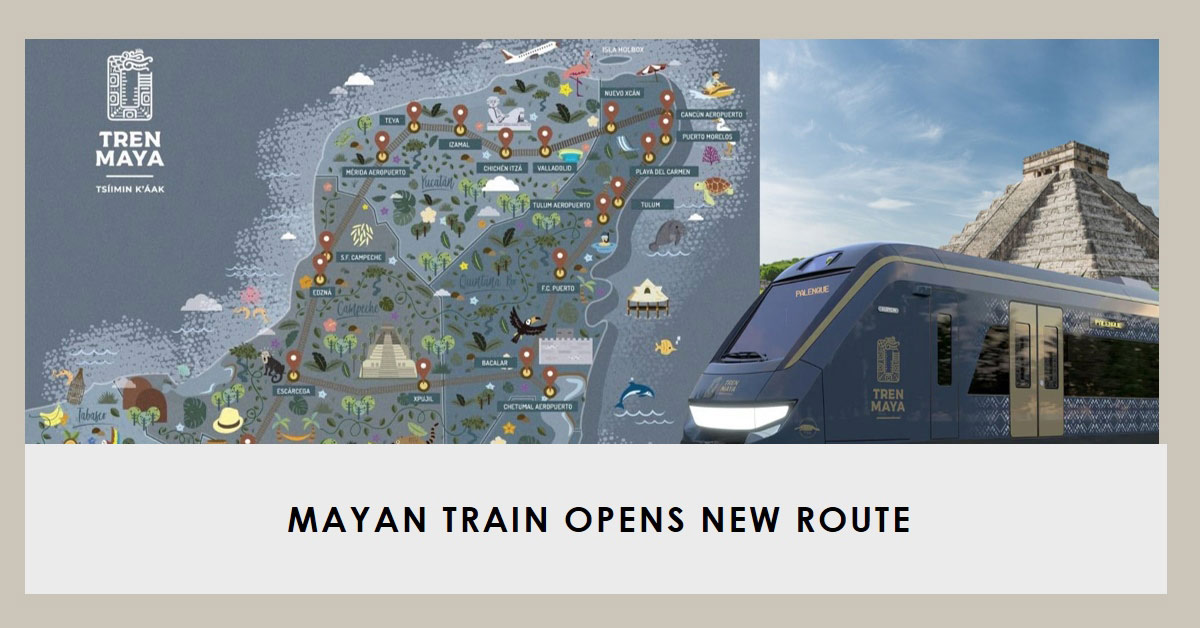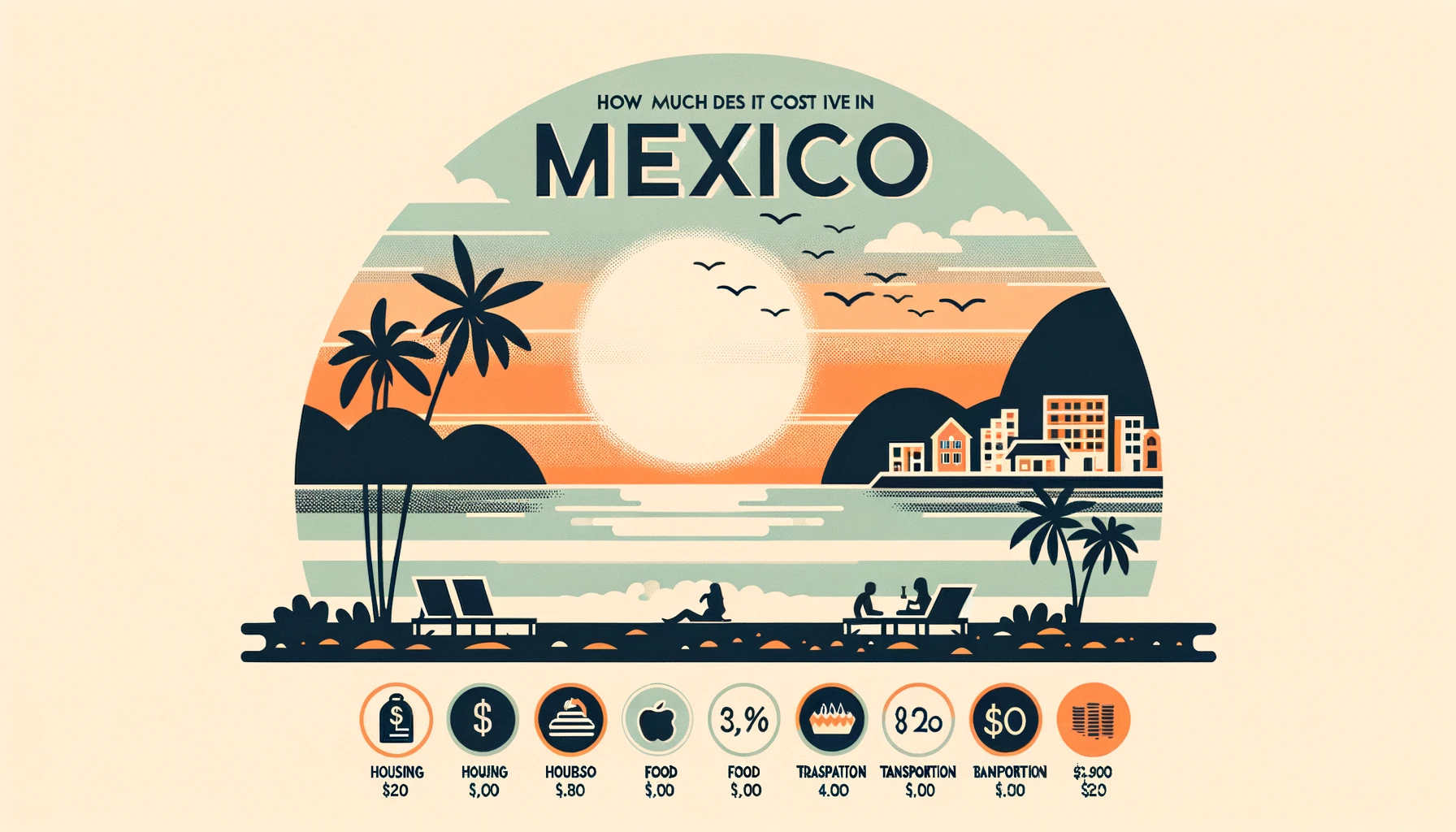The Promise and Controversy of Mexico’s Tren Maya
The Tren Maya is an ambitious passenger rail project underway in Mexico’s Yucatán Peninsula, intended to boost tourism and economic growth in the region.
We recently wrote about the Mayan Train in these other posts.
Mayan Train Completion Date – Prices & Routes
The regions linked by the planned railway route hold rich cultural heritage tracing the ancient Maya and colonial influences. The train will connect critical archaeological zones like Chichen Itza, Calakmul, and Palenque, allowing tourists easier access.
Expected Benefits
Proponents argue the Tren Maya will bring substantial economic benefits. The government touts the railway as a “true engine of social and economic development for the southeast region,” attracting tourists and investment. The train is expected to boost local economies and create over 500,000 jobs. Improved connectivity could also help develop small towns and communities along the line.
Stretching over 950 miles across five Mexican states, the railway aims to connect key archaeological sites, colonial cities, and coastal resorts in southeast Mexico.

FAQs About The Mayan Train Project
What is the Mayan Train in Mexico?
The Mayan Train is an ambitious rail infrastructure project in Mexico’s Yucatán peninsula. It will span about 950 miles of existing and new rail lines connecting tourism hotspots, archeological sites, rural towns, and major cities in the area.
How much is the Mayan Train ride?
Exact ticket pricing details are not yet available for the full Mayan Train line. Fares will likely vary based on the different train classes offered. Affordable options tailored for local workers are planned to promote development.
Is the Mayan Train running?
The Mayan Train is under construction in phases. The first section opened for limited trial service runs in 2022. Completing the entire route across the Yucatán peninsula is slated for sometime in 2023-2024.
How fast will the Mayan Train be?
Depending on the segment, the Mayan Train is projected to reach maximum speeds of up to 125 mph using electrical and diesel locomotive power. Slower speeds, around 50-60 mph, will likely pass through dense urban areas.
Why is the Maya Train good?
Proponents highlight economic development for impoverished communities, improved transportation infrastructure, connectivity between key destinations, and environmental benefits from reducing car travel dependence.
Who owns El Tren Maya?
Mexico’s federal government owns the Mayan Train as part of a regional development strategy. Construction and eventual operations are carried out through government partnerships with various contractors.
The Railway and its Services
The Tren Maya will feature three classes of train service – the short-distance Xiinbal, medium-distance Janal, and luxury P’atal. Trains will have wifi, dining cars, and observation cars with panoramic windows showcasing the lush landscape. The line is being built in sections, with the first stretch from Palenque to Escárcega already operational.
Environmental Concerns
However, the Tren Maya has proven controversial. The railway cuts through protected jungles, threatening fragile ecosystems and endangered wildlife. Critics argue the project failed to assess environmental impacts adequately. The train also runs above a vast network of freshwater caves and sinkholes, putting vital underground rivers at risk. Significant archaeological remains discovered along the route face destruction, too.
Community and Indigenous Opposition
Local communities fear the railway encroaching on their land and livelihoods. Indigenous groups like the Zapatistas oppose the top-down project, lacking consent.
“They didn’t inform us, much less consult us,” one Indigenous leader stated. Critics argue the government prioritized foreign tourists over marginalized local groups who won’t benefit equally.
Legal Challenges
Several injunctions have temporarily halted construction in sensitive areas while court challenges play out. In 2022, a judge ruled authorities failed to consult Indigenous communities adequately per their constitutional rights. “It’s a monumental precedent for the rights of Indigenous people,” said one lawyer.
Government and Industry Responses
The government maintains most of the route utilizes existing tracks or runs alongside highways, minimizing environmental impacts. Officials cite over a thousand meetings with Indigenous groups. The railway company promises reforestation programs and cave/sinkhole monitoring. However, activists remain skeptical that mitigation efforts are sufficient.
What Does the Future Hold?
The Tren Maya’s potential boon for tourism and economic prosperity in southeast Mexico is still alluring if the railway can strike the delicate balance between development and preservation. But its financial viability and timeline face growing uncertainty amidst mounting lawsuits. Either way, the Tren Maya will indelibly transform the regions it traverses for better or worse.
To Sum It Up
The planned train stations and infrastructure are very modern and ambitious in design, with elevated tracks and large stations to allow development around them.
However, there are questions if the project’s scope can realistically meet its vision. The train aims to boost tourism and economic prosperity in southeast Mexico but faces opposition from Indigenous and local communities over environmental impacts and lack of proper consultation.
There are significant concerns over deforestation and threats to protected lands, wildlife, and water resources as the train cuts through rainforests and areas with fragile underground river systems.
Legal injunctions have temporarily halted construction in sensitive areas while lawsuits play out. A judge ruled authorities failed to consult Indigenous groups as per their constitutional rights adequately.
The government and railway companies claim most of the route utilizes existing tracks or runs alongside highways to minimize impacts. They cite community meetings and promise monitoring and reforestation programs.
However, activists remain skeptical that the promised mitigation plans are sufficient for a project of this massive scale, with some calling it a “megaproject of death” that will cause irreversible damage.
The potential economic benefits from increased tourism are still alluring if a balance can be struck between development and preservation—however, the timeline and budget face growing uncertainty due to lawsuits.
Time will tell whether the Tren Maya sets a sustainable course toward economic prosperity or derails amidst environmental damage and social disruption.
The world is watching how Mexico navigates the complex tension at the intersection of progress and tradition.
Related Posts
- The Maya Train Project Route Map
The Maya Train: Bringing High-Speed Rail Travel to Most of Mexico Update June 4, 2023…
- Mayan Train Completion Date - Prices & Routes
Update On the Tren Maya Route and Completion Dates Exploring the Tren Maya: Mexico's Newest…
- Unlock Mexico's Rich History With the Maya Tren
Discover the Magical Journey of the Mayan Tren in Mexico Are you ready to embark…
- Where is The Riviera Maya on a Map?
What Are The Best Riviera Maya Adventures Riviera Maya is a popular tourist destination on…



